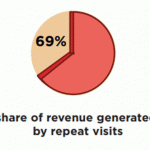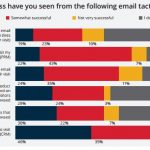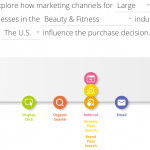The Simple Truth About What’s Driving Digital Next Year
September 30, 2016

Someone recently asked me what I thought the future of marketing was going to look like: what’s driving digital next year and, most importantly, how marketers can prepare for the seemingly ever-shifting changes brought about by digital. This remains a critical question and one that I spend a huge amount of time thinking about for clients and my own business alike.
While predicting the future is a.) hard and b.) uncertain, we can absolutely take a look at where we are right now, what seems to be happening, and look at the trends that are driving not only marketing forward but also our customers’ overall experiences. And the simple truth is that two highly-related trends are what’s really driving digital in the coming year:
- Deeply immersive content
- Seamless customer interactions
Why these two trends? What makes them so important? Let’s take a look.
The simple truth is that, due to the increased bandwidth, processing power, and HD or Retina-quality screens (to say nothing of the 4K displays starting to hit the market), content is getting way more immersive all the time. Think about how much more video, audio, and imagery you’re encountering every day, all around the web.
Take Snapchat, for instance. Now, don’t misunderstand. I’m not suggesting everybody run out and immediately start marketing on Snapchat—far from it. For many businesses, Snapchat’s probably a terrible waste of time and energy. But, if you haven’t signed up for a Snapchat account yet I strongly recommend you do if only to check out the stories placed on the social network by companies like Vice, National Geographic, or CNN. They’re gorgeous. Deep, rich, fully immersive, and incredibly engaging. Even the ads are compelling, full of motion and sound, and are unbelievably effective at drawing you in to their story. Once you’ve experienced content this way, it’s frustrating to see anything less. And this immersive content experience represents one of the core reasons Snapchat has attracted such a loyal and engaged audience.
More importantly, it’s increasingly likely that your customers will expect content to work the same way everywhere else.
This isn’t about whether or not Snapchat will catch on as the social network or the messaging platform or marketing channel of the future. It’s about the experience your customers are getting there and how it will shape what we expect of all social networks and all online content in relatively short order.
As the New York Times’ Farhad Manjoo pointed out on Twitter:
With so many app makers copying it, I think you can make a pretty good case that Snapchat is setting the tone for app design
— Farhad Manjoo (@fmanjoo) September 22, 2016
Want more proof? Well, we’re already starting to see this transition with the commitments to live video on Facebook, the introduction of “stories” into Instagram, and Twitter buying Periscope and integrating its live videos to its content streams. Coincidence? Nope. In fact, given that Facebook owns Instagram, it’s a clear sign that the social giant sees the writing—or more accurately, the video—on the wall
Of course, it’s not just content. Customers expect less friction in their interactions with brands and businesses and products and services at every step of their customer journey, no matter where they browse or buy.
In an interview with eMarketer, the co-founder and CEO of retail software provider Mappedin, Hongwei Liu, said:
“People used to have time to browse in-store—it was how they discovered. Now online search and browsing is how they discover. It’s all about efficiency. Stores are not designed to be efficient. They’re not designed to give you exactly what you want as soon as possible, and it’s hard to change that mindset [among retailers].
It’s also amazing how good some of the online players are at understanding needs. They have a profile about me, they know what I like and they know what I’ll need next time I shop. Brick-and-mortar retailers don’t stand a chance unless they try to build that same level of understanding into their business.”
Liu couldn’t be more right. According to Deloitte, “digital devices now influence the majority of US in-store sales,” up 400% in just three years.
The simple truth? Seamless experiences rule. And an even more simple truth: You need to deliver those seamless, immersive experiences—both in your content and as part of the overall journey—at every single customer touchpoint. That’s the way your customers expect the world to work now. Which makes it the way you’ll need to work going forward. It’s that simple.
Digital & Social Articles on Business 2 Community
(26)













